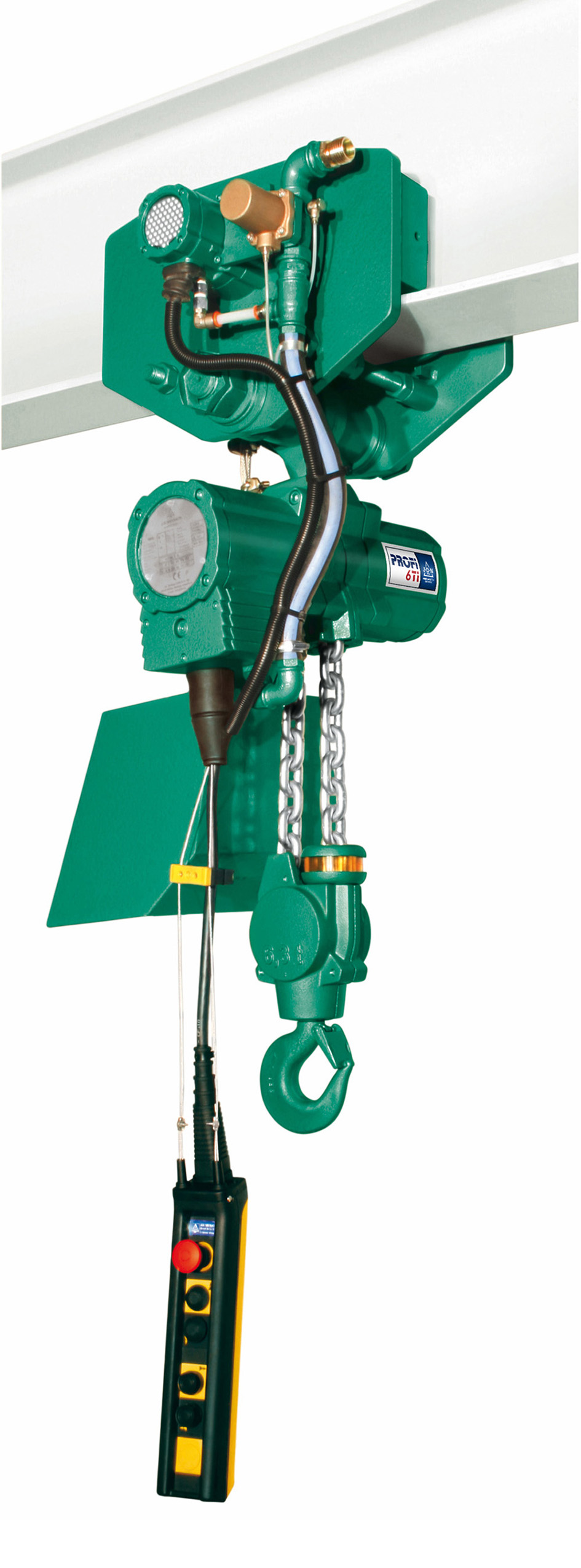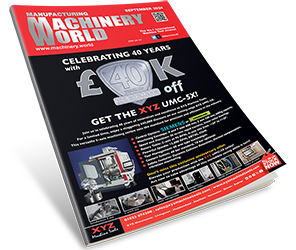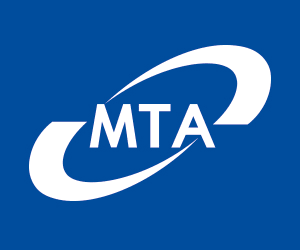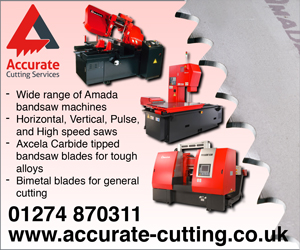When specifying a hoist for use in industrial applications that demand beam-traversing motion, attention should also be paid to the trolley on to which the hoist hooks. According to JD Neuhaus (JDN), the world’s leading manufacturer of hoist solutions, trolley factors such as carrying capacity, ease of installation, explosion protection and ability to negotiate curves, must all be considered if the application is to be optimised.
Three versions are available to facilitate the lateral motion of suspended loads: manual trolleys (LN) for pushing or pulling by hand; reel chain trolleys (LH) for moving by unwinding the reel chain; and motorised trolleys (LM) powered by an air motor. While the standard industrial series stops at a single 20 tonne trolley, higher capacities can be achieved with the benefit of 8 wheel and even 16 wheel systems. Additionally, custom designs or utilisation of the monorail series offer traversable load placement for the entire JDN catalogue of capacities up to 100 metric tonnes.
Importantly, for suitability in hazardous areas, all JDN trolleys offer explosion protection to Ex II 2 GD IIA T4/II 3 GD IIB T4 classifications. Higher classifications are available on request. For instance, with even further increased spark protection for explosion group IIC, the trolleys incorporate running wheels and travel gearing manufactured in bronze for an impressive EX II 2 GD IIC T4 rating.
Careful design and development by JDN’s expert team has led to a host of industry-leading standard features, whereby the company’s trolleys have become synonymous with ease of installation and a robust structure that requires little maintenance. Anti-climb and anti-drop devices are also included as standard. JDN trolleys are designed to tackle all sorts of unique applications which can include curved beams. JDN specialists are on hand to give advice on any project where curved beams are involved.
For those seeking an even higher specification, options for JDN trolleys include a rack and pinion drive for safe load handling on offshore platforms and seafaring vessels, a spark-resistant package and offshore paint to suit rigorous operating environments. Energy can be fed by various systems, including energy chain, C-shaped rail, square rail or spiral hose, to best suit application requirements.

A J D Neuhaus hoist in low headroom trolley shown with radio remote control
Of course, some applications have restricted headroom, which is why JDN also offers a special-purpose series of low-headroom trolleys, meaning tight load placements can still traverse economically utilising JDN’s special low-headroom design. The standard range offers carrying capacities from 0.5 to 6.3 tonne, with higher capacities available for custom built projects. This alongside other JDN traversing solutions creates a multitude of trolley capabilities.
Also able to negotiate overhead rail curvature, JDN’s low-headroom trolleys feature extended tie bars for bulky or elongated loads. The same options and energy feeding systems available for JDN’s standard trolley range, can also be offered to users of low-headroom versions, with the addition of hose trolley energy feeding to the list of choices.
All hoists and trolleys can be remotely controlled by the recently introduced JDN radio control systems, offering ease of use and convenience. The remote controls are an effective alternative to where long control hoses are required and for use in hard-to-reach areas, providing simultaneous control of multiple hoists and trolleys. Comprising a transmitter and receiver, the JDN-RC (Remote Control) is available for both new and retrofit applications.
Typical applications for JDN’s Profi hoist/trolley combinations include aircraft construction, general assembly lines, auto plants, dairies, electroplating lines, foundries, paint shops, steelworks, power plants, refineries, sawmills, shipyards and tempering plants, as well as a host of uses in the chemical, cement, food, furniture, glassmaking, paper and textile industries, to list but a few.
Company Information
With over 200 employees across the group, J D Neuhaus manufactures pneumatically and hydraulically-operated hoists and crane systems up to 115 tonne capacity from its state-of-the-art facility in Witten, Germany. This globally unique specialisation means that J D Neuhaus has set the quality standard for the market, a move that has seen the company become the established global leader in its technology field with customers in more than 90 countries worldwide.
Resilience and reliability are the key product differentiators, thanks largely to their explosive protection rating which makes them ideal for use even in the most challenging of operating environments. Extreme applications include oil and gas exploration in arctic temperatures as low as -45°C, along with underwater tasks such as ship hull repairs, and plenty of others in demanding sectors like mining, the chemical industry, heavy plant construction and many areas of logistics.
The wide portfolio of services provided by J D Neuhaus includes equipment assembly, inspection, maintenance and general overhaul, along with the supply of customer training courses.
Over 80% of production from the Witten plant is exported, which is why the company has long-established subsidiary companies in France, Great Britain, Singapore and the USA, all of which have helped create a tight-knit global network in collaboration with international partners.
J D Neuhaus has history that can be traced back to 1745, and is now in its seventh generation of family ownership. Visitors to the Hebezeug-Museum (Hoist Museum) in Witten, are able to see for themselves the remarkable history of this progressive company.







